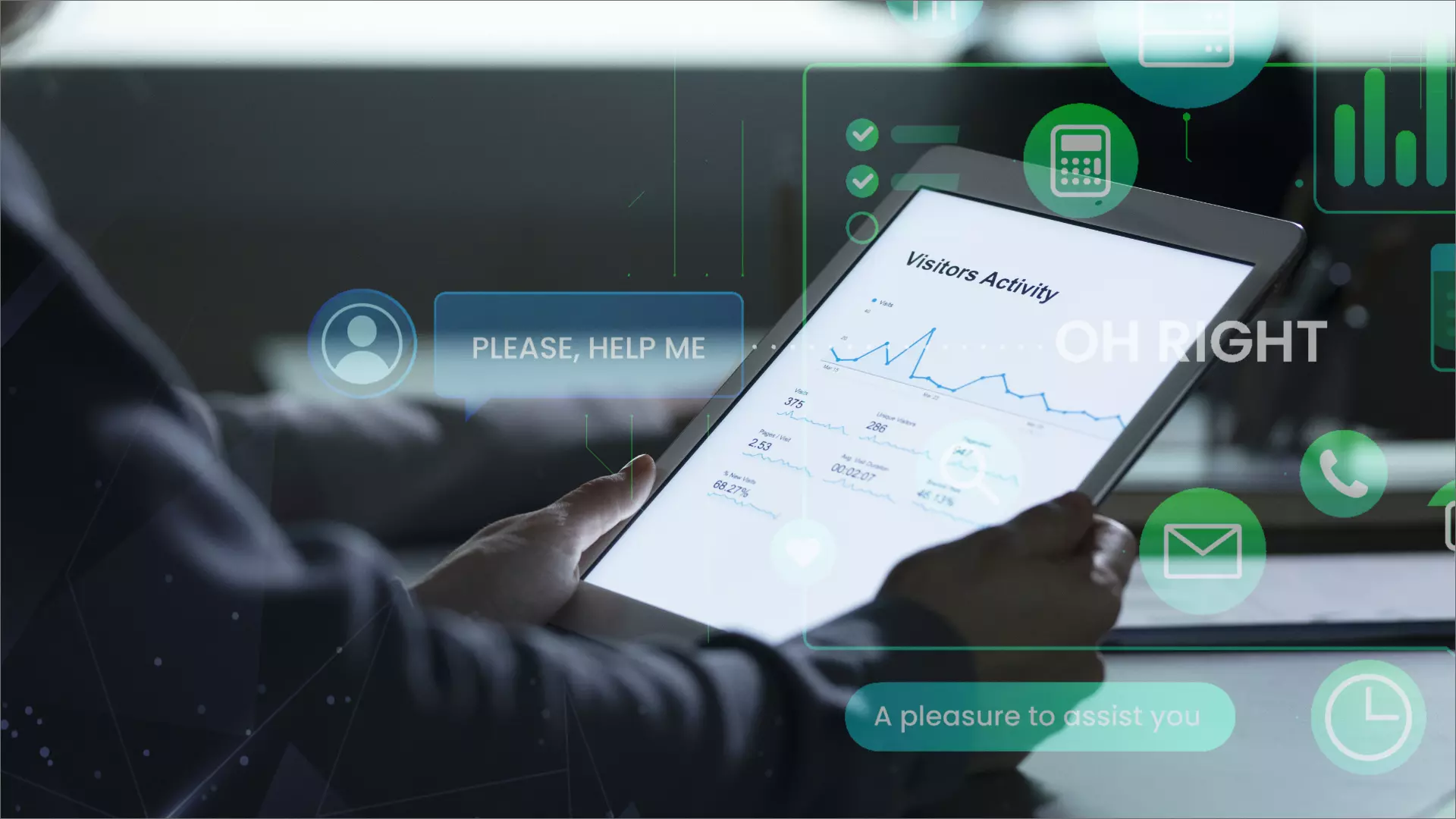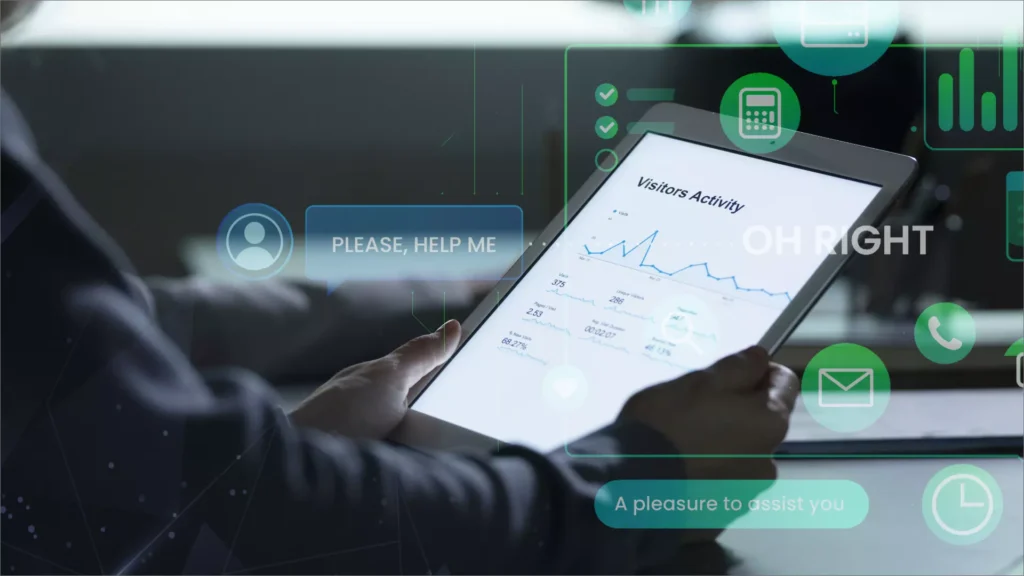
Why Monitoring Your Application is Important?

In today’s dynamic digital landscape, applications stand as the linchpin of our daily interactions, from consumer apps fostering connectivity to complex enterprise solutions driving business operations. As these digital entities continue to evolve and play a pivotal role in shaping user experiences and organizational efficiency, the need for robust application monitoring becomes increasingly apparent.
Application monitoring, beyond a technical practice, is a strategic imperative, involving the systematic tracking and analysis of an application’s performance, security, and overall health. Think of it as a set of vigilant eyes and ears, constantly attuned to the heartbeat of your digital infrastructure.
By providing real-time insights and proactive measures, monitoring ensures uninterrupted user experiences, optimizes performance, and fortifies the security posture of applications. In this digital age, monitoring your application is not just a technical checkbox but a fundamental strategy for navigating the complexities of an interconnected and competitive landscape.
What is Application Performance Monitoring?
Think of Application Performance Monitoring (APM) as your software’s personal cheerleader and coach – it’s the secret sauce that not only keeps things running smoothly but also turns your applications into rockstars of the digital world!
It involves the use of tools, processes, and strategies to monitor, measure, and analyze various aspects of an application’s behavior, with the primary goal of ensuring optimal performance and user satisfaction.
Why is Monitoring Your Applications Important?
Monitoring your applications is crucial for several reasons that span the realms of reliability, performance optimization, user experience enhancement, security, compliance, and overall business success.
1. Application Monitoring Ensures the Reliability
Downtime can have significant consequences, impacting user trust and satisfaction. Monitoring allows you to detect and address issues proactively, minimizing downtime and maintaining a stable user experience.
2. Contributes to Performance Optimization
Monitoring tools track various metrics such as response times, throughput, and resource utilization. Analyzing this data helps identify bottlenecks, optimize code, and enhance the overall performance of your applications.
3. Enhancement of User Experience
The enhancement of user experience is another critical aspect. Through monitoring applications, we can detect and address issues proactively, preventing any negative impact on users. It ensures that your applications deliver a seamless and positive experience, fostering user satisfaction and loyalty.
4. Ensure Security
Application monitoring plays a pivotal role in detecting and preventing security threats. By continuously monitoring for unusual activities or vulnerabilities, you can bolster your application’s defenses and protect sensitive data from breaches.
5. Ensuring Regulatory Compliance
Compliance with regulations and standards is a key concern for many businesses. Monitoring aids in meeting compliance requirements by providing the necessary data and insights. It ensures that your applications adhere to industry standards and regulations, avoiding legal and financial repercussions.
6. Facilitates Effective Issue Identification and Resolution
Real-time alerts and comprehensive data analysis enable quick identification of the root causes of problems, allowing your team to implement timely solutions. This not only reduces downtime but also minimizes the impact on users and business operations.
7. Data Gathered For Reporting and Analysis
It enables data-driven decision-making, helping you understand trends, plan for future improvements, and align your application strategy with business goals
List of Application Monitoring Tools
- New Relic
- AppDynamics
- Datadog
- Dynatrace
- SolarWinds AppOptics
- Splunk
- Raygun
- Prometheus
- ELK Stack (Elasticsearch, Logstash, Kibana)
- Nagios
- Stackify Retrace
- Grafana
Choosing the Right Monitoring Tools
In the vast landscape of application monitoring, several tools have gained prominence for their effectiveness in ensuring the health and performance of digital assets.
One such tool is New Relic, known for its comprehensive approach that covers application performance, infrastructure, and user experience monitoring.
Another notable player is AppDynamics, which offers real-time insights into application performance and user interactions.
Additionally, Datadog has emerged as a versatile solution, providing end-to-end visibility across infrastructure and applications.
Each of these tools brings unique features and capabilities to the table, catering to the diverse needs of businesses operating in today’s complex digital environment.
Factors to Consider When Selecting a Monitoring Application
When navigating the myriad of monitoring tools, it’s crucial to consider several factors to ensure the chosen solution aligns with the specific requirements of your applications and business goals.
i. Scalability
Evaluate whether the monitoring tool can scale with your growing infrastructure and user base. A scalable solution ensures that it can accommodate increased data volumes and complexities as your business expands.
ii. Comprehensive Monitoring
Look for tools that offer a comprehensive suite of monitoring capabilities, covering aspects such as application performance, infrastructure, user experience, and security. A holistic approach ensures a thorough understanding of your application ecosystem.
iii. Ease of Integration
Choose a monitoring tool that seamlessly integrates with your existing technology stack. Compatibility with various programming languages, frameworks, and cloud services is essential for a smooth integration process.
iv. Real-time Analytics and Alerts
Opt for a tool that provides real-time analytics and proactive alerting mechanisms. This enables quick identification of issues and allows for immediate response, minimizing the impact on users and business operations.
v. Customization
Consider the flexibility of the monitoring tool in terms of customization. The ability to tailor monitoring parameters and dashboards to suit the specific needs of your applications enhances the tool’s effectiveness.
vi. Cost-Effectiveness
Assess the cost structure of the monitoring solution, considering both initial investment and ongoing operational expenses. Ensure that the chosen tool provides value for money and aligns with your budget constraints.
vii. User-Friendly Interface
A user-friendly interface is crucial for efficient monitoring. Choose a tool with an intuitive dashboard and reporting system, facilitating ease of use for your team.
Final Words - Why Monitoring Your Application is Important?
In conclusion, the significance of applications in our digital landscape cannot be overstated, as they drive connectivity, productivity, and innovation. This blog has underscored the pivotal role of proactive application monitoring in ensuring the reliability, performance optimization, user experience enhancement, and security of these digital assets.
By introducing popular tools such as New Relic, AppDynamics, and Datadog, we’ve emphasized the need for a comprehensive and customizable monitoring solution. The factors discussed, including scalability, real-time analytics, and ease of integration, serve as a guide for businesses seeking the right monitoring tools. As we navigate the complexities of the digital era, it becomes evident that monitoring your applications is not just a technical necessity but a strategic imperative.
The ability to identify and address issues before they impact users, coupled with the insights gained for continuous improvement, reinforces the importance of proactive application monitoring for the overall success of businesses in today’s dynamic and interconnected digital landscape.
Author



